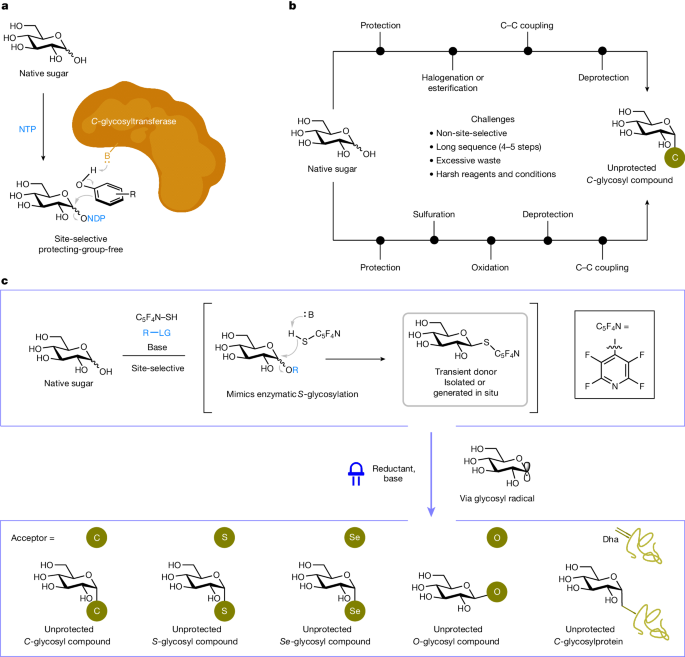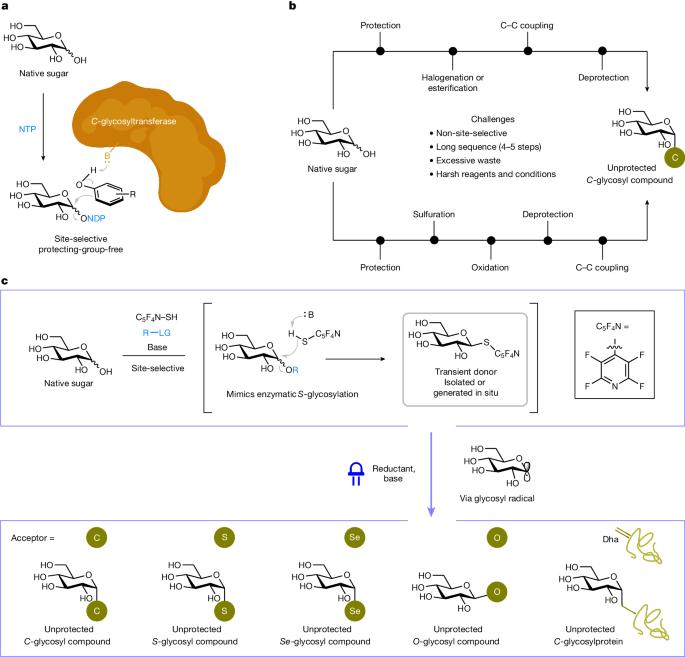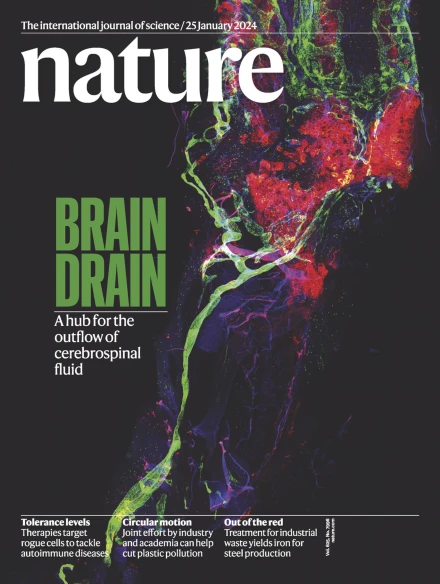Direct radical functionalization of native sugars
IF 50.5
1区 综合性期刊
Q1 MULTIDISCIPLINARY SCIENCES
引用次数: 0
Abstract
Naturally occurring (native) sugars and carbohydrates contain numerous hydroxyl groups of similar reactivity1,2. Chemists, therefore, rely typically on laborious, multi-step protecting-group strategies3 to convert these renewable feedstocks into reagents (glycosyl donors) to make glycans. The direct transformation of native sugars to complex saccharides remains a notable challenge. Here we describe a photoinduced approach to achieve site- and stereoselective chemical glycosylation from widely available native sugar building blocks, which through homolytic (one-electron) chemistry bypasses unnecessary hydroxyl group masking and manipulation. This process is reminiscent of nature in its regiocontrolled generation of a transient glycosyl donor, followed by radical-based cross-coupling with electrophiles on activation with light. Through selective anomeric functionalization of mono- and oligosaccharides, this protecting-group-free ‘cap and glycosylate’ approach offers straightforward access to a wide array of metabolically robust glycosyl compounds. Owing to its biocompatibility, the method was extended to the direct post-translational glycosylation of proteins. A radical-based method for functionalizing native sugars shows a way to remove typical protecting-group manipulations.


本机糖的直接自由基功能化。
天然(原生)糖类和碳水化合物含有大量具有类似反应活性的羟基1,2。因此,化学家们通常依靠费力的多步骤保护基策略3 将这些可再生原料转化为试剂(糖基供体)来制造聚糖。将原生糖直接转化为复杂的糖类仍然是一个显著的挑战。在这里,我们描述了一种光诱导方法,通过同溶(单电子)化学反应,绕过不必要的羟基掩蔽和操作,从广泛可用的原生糖构建模块实现位点和立体选择性化学糖基化。这一过程通过区域控制生成瞬时糖基供体,然后在光的活化下与亲电物发生基于自由基的交叉耦合,让人联想到自然界。通过对单糖和寡糖进行选择性异构官能化,这种无保护基团的 "盖帽和糖基化 "方法可直接获得一系列代谢稳定的糖基化合物。由于这种方法具有生物兼容性,因此被扩展到蛋白质的直接翻译后糖基化。
本文章由计算机程序翻译,如有差异,请以英文原文为准。
求助全文
约1分钟内获得全文
求助全文
来源期刊

Nature
综合性期刊-综合性期刊
CiteScore
90.00
自引率
1.20%
发文量
3652
审稿时长
3 months
期刊介绍:
Nature is a prestigious international journal that publishes peer-reviewed research in various scientific and technological fields. The selection of articles is based on criteria such as originality, importance, interdisciplinary relevance, timeliness, accessibility, elegance, and surprising conclusions. In addition to showcasing significant scientific advances, Nature delivers rapid, authoritative, insightful news, and interpretation of current and upcoming trends impacting science, scientists, and the broader public. The journal serves a dual purpose: firstly, to promptly share noteworthy scientific advances and foster discussions among scientists, and secondly, to ensure the swift dissemination of scientific results globally, emphasizing their significance for knowledge, culture, and daily life.
 求助内容:
求助内容: 应助结果提醒方式:
应助结果提醒方式:


